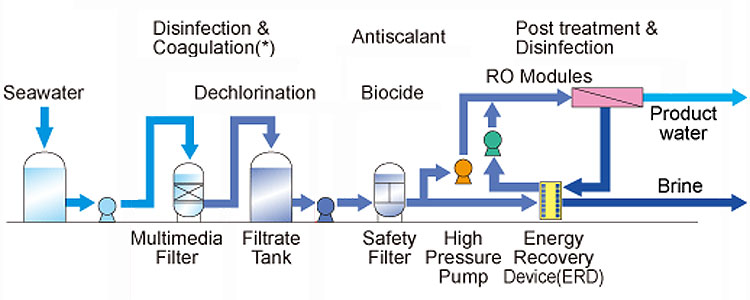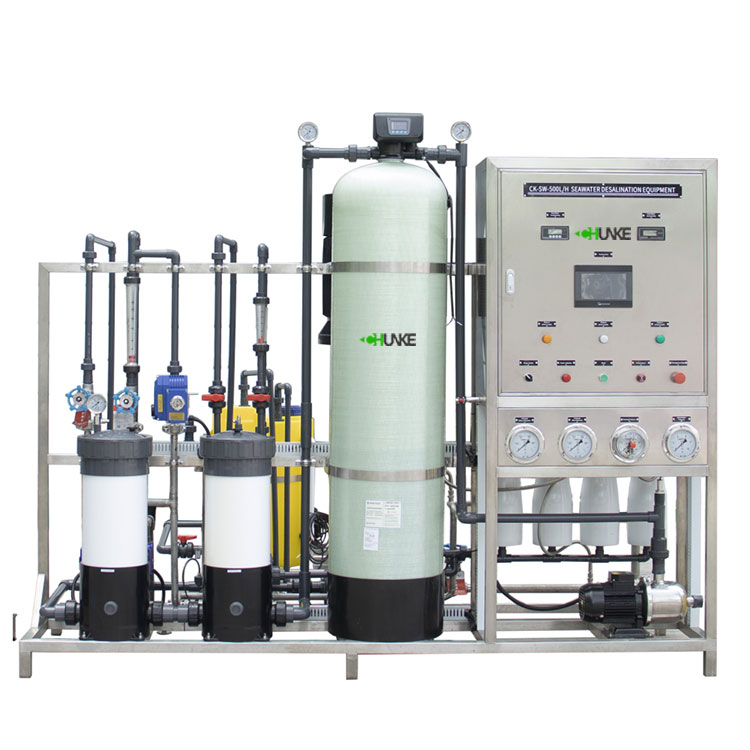Who invented seawater desalination technology?
Introduction: Desalination technology plays an increasingly important role worldwide, especially in areas with water shortages. Through desalination technology, seawater can be converted into fresh water to provide people with clean and safe water sources. However, the invention and development process of this technology is not simple. It has experienced many innovations and improvements. This article will explore the origins of desalination technology and how it has developed.
Who invented seawater desalination technology?
The invention of desalination technology originated in the mid-20th century and was first patented by Alexander Zarchin.
1. Contributions of Alexander Chachin:
Alexander Chachin patented desalination technology in 1964. His desalination method is based on freezing seawater to form pure water crystals in a vacuum environment, which are then melted to create salt-free water. This method expels the salt in a vacuum stage.
Chachin's invention laid the foundation for the further development of seawater desalination technology and provided ideas and inspiration for other scientists and engineers to later innovate in this field.
2. Development history of technology:
Chachin's invention laid the foundation for the early stages of desalination technology, but scientists and engineers produced many innovations in the field in the decades that followed.
Among them, the introduction of reverse osmosis technology is an important breakthrough in seawater desalination technology. It separates water molecules from salt and impurities through a semipermeable membrane, which is more efficient and consumes less energy.
3. Modern seawater desalination technology:
With the continuous development of technology, modern seawater desalination technology has made great progress. Various methods such as reverse osmosis, thermal distillation and electrodialysis are widely used in the field of seawater desalination.
The application of these technologies increases the yield and quality of desalinated water and reduces costs, making desalination a practical solution to water shortages.

How does reverse osmosis technology improve the desalination process?
As one of the most commonly used desalination methods, reverse osmosis technology plays an important role in improving the desalination process. Below we’ll explain how reverse osmosis technology works and how it can improve the desalination process.
Reverse osmosis technology applies high pressure to seawater through the use of a semipermeable membrane to separate water molecules from salts and impurities. Compared with the traditional distillation method, reverse osmosis technology has the advantages of low energy consumption, easy operation, and high water production rate, so it is widely used in desalination plants and other water treatment fields.
Improvements in this technology mainly focus on improving the separation efficiency of semipermeable membranes, reducing energy consumption and costs, and increasing system stability. By continuously optimizing the materials and structures of semipermeable membranes, such as improving the permeability and anti-pollution performance of semipermeable membranes, the efficiency of seawater desalination and the quality of water production can be effectively improved. At the same time, optimizing the design and operation of reverse osmosis equipment and systems can also reduce energy consumption and operating costs, and improve the stability and reliability of the system.
In general, the continuous improvement and application of reverse osmosis technology has promoted the development of seawater desalination technology and provided important technical support for solving the problem of freshwater resource shortage.

What impact will the development of modern desalination technology have on global water resources?
The development of modern seawater desalination technology has had an important impact on the sustainable use of global water resources and water supply security.
1. Alleviating water shortages:
In many water-scarce areas, desalination has become an important way to provide clean drinking water. Especially in arid regions such as the Middle East and North Africa, desalination technology has become a key component of water supply systems.
By converting seawater into fresh water, these areas can meet the water needs of daily life and industrial production, improving the quality of life of local residents.
2. Promote economic development:
The widespread application of seawater desalination technology has provided impetus for economic development in many regions. Stable and reliable water sources help attract investment and promote the development of agriculture, industry and tourism.
In some coastal areas, desalination technology can also support emerging industries such as aquaculture and marine biotechnology.
3. Challenges faced:
Although desalination technology has made significant progress in many aspects, it still faces some challenges. For example, high cost and energy consumption are major issues with current desalination technology.
In addition, the discharge of concentrated brine produced by the desalination process may have an impact on the marine ecosystem, and measures need to be taken to manage and mitigate it.




